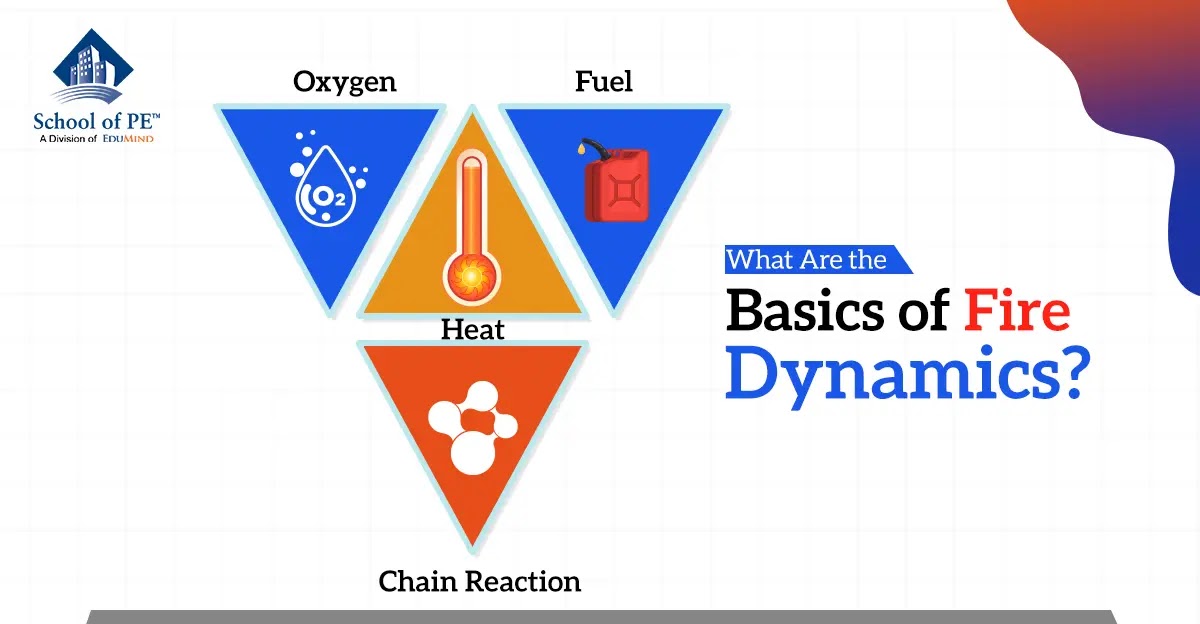The first step in fighting fire is to understand exactly what a fire is. Simply put, a fire is a rapid chemical reaction, oxidation to be specific, that produces heat, light, and smoke as part of combustion. The processes that start a fire can be graphically explained through the fire tetrahedron, which shows that for a fire to start, it needs four items: fuel, heat (energy), an oxidizer, and an uninterrupted chemical reaction. If any one if these items is taken away, a fire will not start. As an example, water extinguishes a fire by efficiently absorbing the heat. Another example would be a carbon dioxide system that replaces the oxygen around a fire thereby removing the oxidizer. A unique fire suppression system known as clean agents will interrupt the chemical reaction of a fire.
Table of Contents

1. The Four Stages of Fire Development
There are four stages of fire development: ignition, growth, fully developed, and decay. The ignition stage is when all four elements of the fire tetrahedron coalesce, the fuels reach their ignition temperature, and the fire begins. During the growth stage, the fire increases fuel consumption and creates more heat and smoke. The fully developed stage occurs when the maximum amount of fuel and oxidizers are consumed, and the highest heat release rate is produced. The temperature decreases and intensity is reduced during the decay stage, which happens when the available fuel has been consumed.
2. Determining a Fire's Intensity
Generally, the intensity of a fire is defined by its heat release rate, measured in kilowatts or BTU/second, and the higher the heat release rate, the more intense the fire is. Heat release rate can be modeled as a power law growth model, the most common of which is known as the t2-model (t-squared). Within the t2-model, fire growth is classified as slow, medium, fast, or ultrafast, where the heat release rate is dependent on the time of the fire. Choosing the correct fire intensity is paramount when designing a fire protection system. For instance, a slow growth fire might be appropriate for an office building with a limited fuel load and the fire suppression system would be relatively light and simple. However, a tire storage warehouse might have an ultrafast fire and the suppression system would need to be designed accordingly. Modeling a slow growth fire in that tire warehouse would be a poor basis of design.
3. Heat Transference
A major aspect of fire dynamics is to understand how heat is transferred to and from a fire. There are three main methods of heat transfer: conduction, convection, and radiation. Conduction is when heat travels through a medium via direct contact and transfers energy from a higher state to a lower state. Another way to understand conduction is the way that if a metal spoon is heated on one end, the heat will move to the other end of the spoon, burning the hand that is holding it. Convection occurs when heat energy is transferred via air. An example of convection is when a cake is being baked in the oven; the energy from the heating elements is transferred to the flour through the air. Radiative energy does not need a medium (air or direct contact) to transfer energy. Radiation involves electromagnetic waves that excite target molecules, such as microwave energy.
Many of the fire codes are based on studies of fire dynamics. For instance, the separation of buildings is driven by the heat release rate and radiative energy that would be produced by a theoretical fire. If buildings are too close to each other and one catches fire, there is a good chance the fire will spread to other buildings. The study of fire dynamics has immediate real-world applications to how the built environment is constructed.
Interested in learning more about fire protection engineering? Check out these other blogs from School of PE:
No comments :
Post a Comment